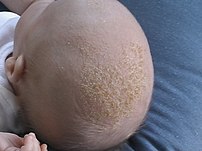[amazon_link asins=’B00322LLGA,B00TXP0DBY,B00UTYSAT0,B00QA0A84C,B01IPUJ606,B005JAT3TU,B00VTKG7C0,B010GFXBMM,B0029O0BR2′ template=’ProductCarousel’ store=’finmeacur-20′ marketplace=’US’ link_id=’e3b73074-184a-11e8-a8b0-8bad2047eaa7′]
We live in a stressful world, with family, work, financial needs, health, pollution, lack of sleep, and the new urban life style taking their toll. Fighting stress has become a money spinner. Doctors advocate preventive methods like diet, exercise, yoga, meditation, holidays and hobbies. These remedial measures require time and effort, scarce commodities in the 21st century. Media publicity highlights the potential hazards of stress. This has resulted in health being slickly packaged as a profitable commodity. Nutritional supplements (consumed dissolved in milk or water) and vitamins, once used for the sick, bedridden or elderly are now considered essential “stress busters”.
Pharmaceutical companies vie with one another with tall claims, marketing gimmicks and eye-catching advertisements for formulations and supplements. They emphasise rejuvenation, prevention of disease, and accelerated mental development. After all everyone wants their child to be a “topper” or the next Sachin Tendulkar.
Vitamin supplements can be purchased over the counter (OTC) or prescribed. It pays to be knowledgeable about what is actually required, especially if you consult more than one physician each of whom may add a supplement. Some “high potency” vitamin supplements provide one ingredient in high concentrations and the rest in sub optimal doses. If you are taking one or more tablets or capsules of B complex, a vitamin and mineral supplement, additional calcium and a fortified beverage, the total concentration of one or more ingredients may be more than you require.
There may also be mutual antagonism among the ingredients, preventing absorption and utilisation. Also, if the instructions says “once a day,” don’t take it twice; you will be doing yourself more harm than good.
The fat soluble vitamins A,D, K and E are stored in body fat and the liver. Stores of A and D can last as long as six months. They can accumulate to toxic levels if consistently consumed in excess. Vitamin A occurs naturally as carotenoids in yellow foods. Excessive consumption of carotenoids can cause a yellow discolouration of the skin. Unnecessary consumption of supplements can result in hypervitaminosis A. In children it causes symptoms similar to that of a brain tumour.
Retinoids, the precursor of vitamin A, are administered as a treatment for acne. In a pregnant woman this can cause severe congenital malformations.
……….
Vitamin D prevents rickets. Inadvertent administration of too much causes floppy muscles, irritability, vomiting, calcification in various body parts, aortic valve damage and clouding of the eyes.
Vitamin K is needed for clotting. Excessive administration of synthetic vitamin K can produce liver damage.
The B complex vitamins usually exhibit their deficiency as a group and produce fatigue, irritability, skin changes, anaemia, burning feet, fissures at the angles of the mouth and a smooth red tongue. Excess vitamins are usually harmlessly excreted in the urine. Pregnant women may be given high doses of vitamin B6 (pyridoxine) to prevent vomiting. They can give birth to children with B6 dependency, and convulsions.
More than 65 mg a day of iron should not be taken. Excess iron gets deposited in organs like the liver, heart and thyroid, seriously damaging them.
More than 60 mg a day of zinc may be harmful. It can cause vomiting, diarrhoea, anaemia and nerve damage.
Amino acids are the basic building blocks of all protein. Protein deficiency owing to illness or malnutrition manifests itself with generalised swelling of the body and changes in the hair and nails. A few milligrams of amino acid in expensive capsules or a tonic will not help. A high protein diet needs to be eaten instead.
Iodine is provided in the “iodised salt” used for cooking. Supplements and tonics are sometimes fortified with additional iodine. This inadvertent intake can cause signs and symptoms of thyroid disease.
Pregnant women require folic acid supplements. Some expensive “women’s supplements” are marketed with additional vitamins, herbs and amino acids. This is not needed and may actually be dangerous.
Some special rejuvenating preparations for men contain sub optimal doses of herbs or precursors of androgenic steroids. The benefit is questionable.
Aware of this dangerous trend, government legislation has fixed the content of vitamin and mineral formulations. This has forced manufacturers to repackage vitamins as “dietary supplements” which are not under “price control” by adding trace elements, amino acids and minerals to the original formulation. The price is higher, but the proportions of the constituents are not scientific, nor are the advantages of the additives proved.
A sensible low fat diet supplemented with fresh fruits and vegetables (despite pollution and the use of fertilisers) supplies all the nutrients, vitamins and minerals needed. Supplements are required if the diet becomes inadequate as a result of premature birth, ageing, pregnancy, disease or food faddism.
Sources: The Telegraph (Kolkata, India)
Related articles by Zemanta
- All Worries Related to Diet Have Come to an End With the Resveratrol Supplements
- Supplement Products for Men’s Health
- Dietary Supplements to Enhance General Well Being for a Healthy Body
- Educate Yourself About Nutritional Supplement
- How To Get The Right Amount Of Vitamins
- How To Take Dietary Supplements































